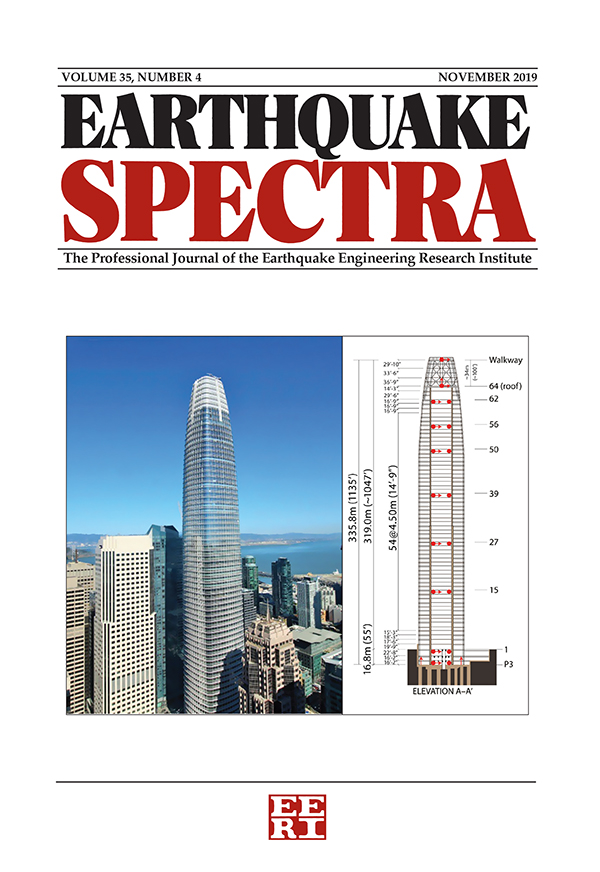用于结构抗震保护的阻尼刚性下部结构系统
IF 3.7
2区 工程技术
Q2 ENGINEERING, CIVIL
引用次数: 0
摘要
建筑规范通常接受结构因地震偏移而不可避免产生的非弹性变形。为了控制破坏,对非弹性变形设定了限制。标准的被动消能系统被用来减少破坏,一般都有一定的效果。本文中提出的阻尼刚性下部结构(DRS)被动阻尼系统可从几何角度放大阻尼器位移并施加重新定心力,从而有效释放地震能量,防止结构损坏。根据本文介绍的实施和设计原则,使用普通的阻尼和无阻尼对角线进行布置,可实现上述目的。DRS 系统可大大降低材料消耗和建筑成本,从而在地震力作用下设计出更具可持续性的结构。此外,使用高强度材料还能增强其重新定心机制。该系统可根据建筑需要进行调整,适用于所有重要程度和高度变化的钢结构或混凝土结构。本文章由计算机程序翻译,如有差异,请以英文原文为准。
Damped rigid substructure system for seismic protection of structures
Building codes commonly accept inelastic deformations that inevitably occur due to seismic excursions in structures. To control the damage, limits on the inelastic deformations have been established. Standard passive energy dissipation systems have been used to reduce the damage, generally with some effectiveness. The damped rigid substructure (DRS) passive damping system, proposed in this article, geometrically amplifies the damper displacements and exerts a re-centering force, leading to effective discharge of the seismic energy to the extent that structural damage can be prevented. This is achieved using common damped and undamped diagonals arranged per implementation and design principles introduced in this article. The DRS system can considerably reduce material consumption and construction costs, leading to more sustainable structures when seismic forces govern the design. It can also benefit from the usage of high-strength materials to enhance its re-centering mechanism. The system is adaptable to the architectural needs and can be used for all categories of importance and height variation, made of steel or concrete.
求助全文
通过发布文献求助,成功后即可免费获取论文全文。
去求助
来源期刊

Earthquake Spectra
工程技术-工程:地质
CiteScore
8.40
自引率
12.00%
发文量
88
审稿时长
6-12 weeks
期刊介绍:
Earthquake Spectra, the professional peer-reviewed journal of the Earthquake Engineering Research Institute (EERI), serves as the publication of record for the development of earthquake engineering practice, earthquake codes and regulations, earthquake public policy, and earthquake investigation reports. The journal is published quarterly in both printed and online editions in February, May, August, and November, with additional special edition issues.
EERI established Earthquake Spectra with the purpose of improving the practice of earthquake hazards mitigation, preparedness, and recovery — serving the informational needs of the diverse professionals engaged in earthquake risk reduction: civil, geotechnical, mechanical, and structural engineers; geologists, seismologists, and other earth scientists; architects and city planners; public officials; social scientists; and researchers.
 求助内容:
求助内容: 应助结果提醒方式:
应助结果提醒方式:


